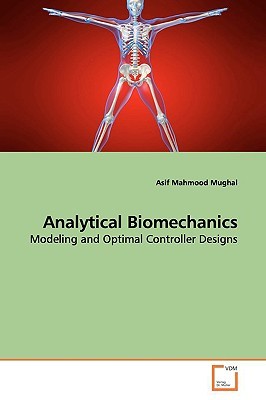
- We will send in 10–14 business days.
- Author: Asif Mahmood Mughal
- Publisher: VDM Verlag
- ISBN-10: 3639159217
- ISBN-13: 9783639159219
- Format: 15.2 x 22.9 x 1 cm, minkšti viršeliai
- Language: English
- SAVE -10% with code: EXTRA
Reviews
Description
In last century many engineers and scientist applied principal of mathematical theories to biological subjects and thus evolved new fields like biomechanics. A human biomechanical model which can mimic diverse 3D physiological movements is a challenging task. Hundreds of researchers obtained experimental data to study and analyze human movements. On the other hand, there are few researchers who provided analytical models for biological movements. This book provides new analytical modeling schemes to biomechanical movements, physiological motor control and combined musculoskeletal models with neurophysiologic controller to emulate muscle commands and joint torques. This book discusses the details of optimal controls with physiological cost functions to analyze the human sit-to-stand task for healthy and stroke patients. The biomechanical framework uses Maple and Matlab environments for modeling, control and simulation purposes. Major part of this work is peer-reviewed, and holds great potential to study task specific applications in kinesiology, ergonomics, and rehabilitation robotics, biomedical engineering and experimental validation of human voluntary movements.
EXTRA 10 % discount with code: EXTRA
The promotion ends in 24d.02:58:10
The discount code is valid when purchasing from 10 €. Discounts do not stack.
- Author: Asif Mahmood Mughal
- Publisher: VDM Verlag
- ISBN-10: 3639159217
- ISBN-13: 9783639159219
- Format: 15.2 x 22.9 x 1 cm, minkšti viršeliai
- Language: English English
In last century many engineers and scientist applied principal of mathematical theories to biological subjects and thus evolved new fields like biomechanics. A human biomechanical model which can mimic diverse 3D physiological movements is a challenging task. Hundreds of researchers obtained experimental data to study and analyze human movements. On the other hand, there are few researchers who provided analytical models for biological movements. This book provides new analytical modeling schemes to biomechanical movements, physiological motor control and combined musculoskeletal models with neurophysiologic controller to emulate muscle commands and joint torques. This book discusses the details of optimal controls with physiological cost functions to analyze the human sit-to-stand task for healthy and stroke patients. The biomechanical framework uses Maple and Matlab environments for modeling, control and simulation purposes. Major part of this work is peer-reviewed, and holds great potential to study task specific applications in kinesiology, ergonomics, and rehabilitation robotics, biomedical engineering and experimental validation of human voluntary movements.


Reviews